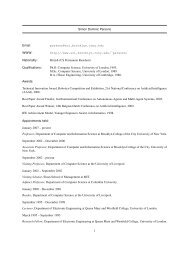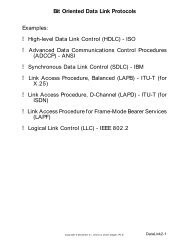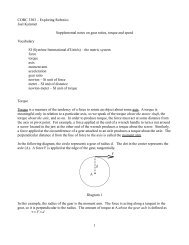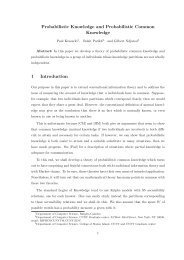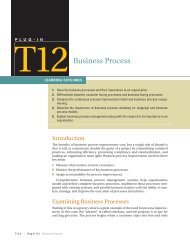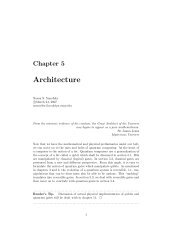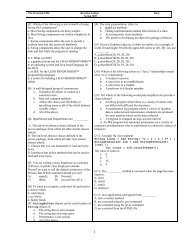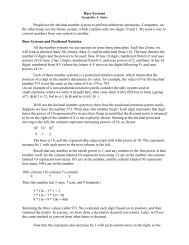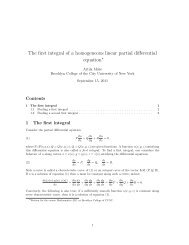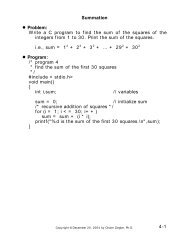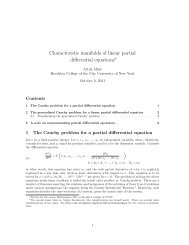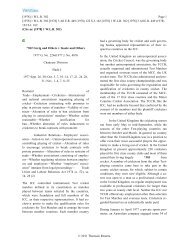Toward a Unified Theory of Human-Agent Modeling: A Position Paper
Toward a Unified Theory of Human-Agent Modeling: A Position Paper
Toward a Unified Theory of Human-Agent Modeling: A Position Paper
Create successful ePaper yourself
Turn your PDF publications into a flip-book with our unique Google optimized e-Paper software.
Our work has primarily focused on building models <strong>of</strong> type III and IV, which are<br />
the emphasis in this paper, though we have done some work constructing type<br />
II models [1]. We have also found that type II models are useful in evaluating<br />
the results <strong>of</strong> our modeling efforts [2]. (See Section 3.)<br />
The approaches that emulate the outcomes <strong>of</strong> individual humans’ behaviors<br />
(category 1a) produce models <strong>of</strong> type I, II or III. A variety <strong>of</strong> representations<br />
and machine learning techniques can be used to acquire and store such<br />
models. For example, a Bayesian network [3] could represent the probability<br />
that a particular person executes an action in a given state, and a model could<br />
learn the probabilities associated with each state-action pair. (See Section 2.)<br />
The approaches that emulate the outcomes <strong>of</strong> groups <strong>of</strong> humans’ behaviors (1b)<br />
employ a strategy similar to modeling individuals and also produce type I, II or<br />
III models. However, the data used to train the model is based on the collective<br />
behavior <strong>of</strong> multiple individuals. The collective behaviors may be clustered in<br />
various ways, e.g., according to behavior characteristics or demographics. (See<br />
Section 3.) The approaches that emulate the process <strong>of</strong> human behaviors (2)<br />
produce type IV models. These tend to be centered on individuals (though these<br />
approaches could model groups where all members exhibit the same, or similar,<br />
processes), so we do not differentiate between “one” and “many” trainers<br />
in this category. The idea is to model the human’s decision-making process for<br />
action selection—not just what the outcome was, but how she made the choice<br />
<strong>of</strong> action(s) that led to the outcome. (See Section 4.)<br />
Generally speaking, there are two different representation strategies employed<br />
for storing the models produced, each following one <strong>of</strong> the two historically opposing<br />
camps from within the Artificial Intelligence community [4]: symbolic<br />
methods that require manual construction <strong>of</strong> rules which describe behaviors,<br />
versus connectionist methods that require machine learning procedures to evolve<br />
weights or probabilities that guide selection <strong>of</strong> actions based on input states. The<br />
first strategy involves engineering a policy for an agent to follow when selecting<br />
an action given a state, whereas the second involves learning the policy 3 . The<br />
more successful applications <strong>of</strong> the first strategy stem from work done by behavioral<br />
specialists, such as developmental psychologists, in which they observe<br />
human subjects engaging in activities and then create theories about the subjects’<br />
behaviors by analyzing the observations made. Following this procedure,<br />
computational models can then be built that reproduce the subjects’ behaviors.<br />
While the second strategy could also be based on theoretical models from the<br />
literature, the connectionist methods more typically skip that step and learn<br />
directly from quantitative or categorical data that is collected during a period<br />
<strong>of</strong> human subject activity. For example, a human expert could explain to a programmer<br />
how she plays the game <strong>of</strong> Backgammon and the programmer could<br />
engineer a rule set that encodes the expert’s behavior; or a connectionist program<br />
(e.g., neural network) could learn how to play Backgammon by playing<br />
many games against itself [5], another computer player or a human opponent,<br />
and adjusting its weights as it plays.<br />
3 Note that the second also involves engineering the connectionist representation.



